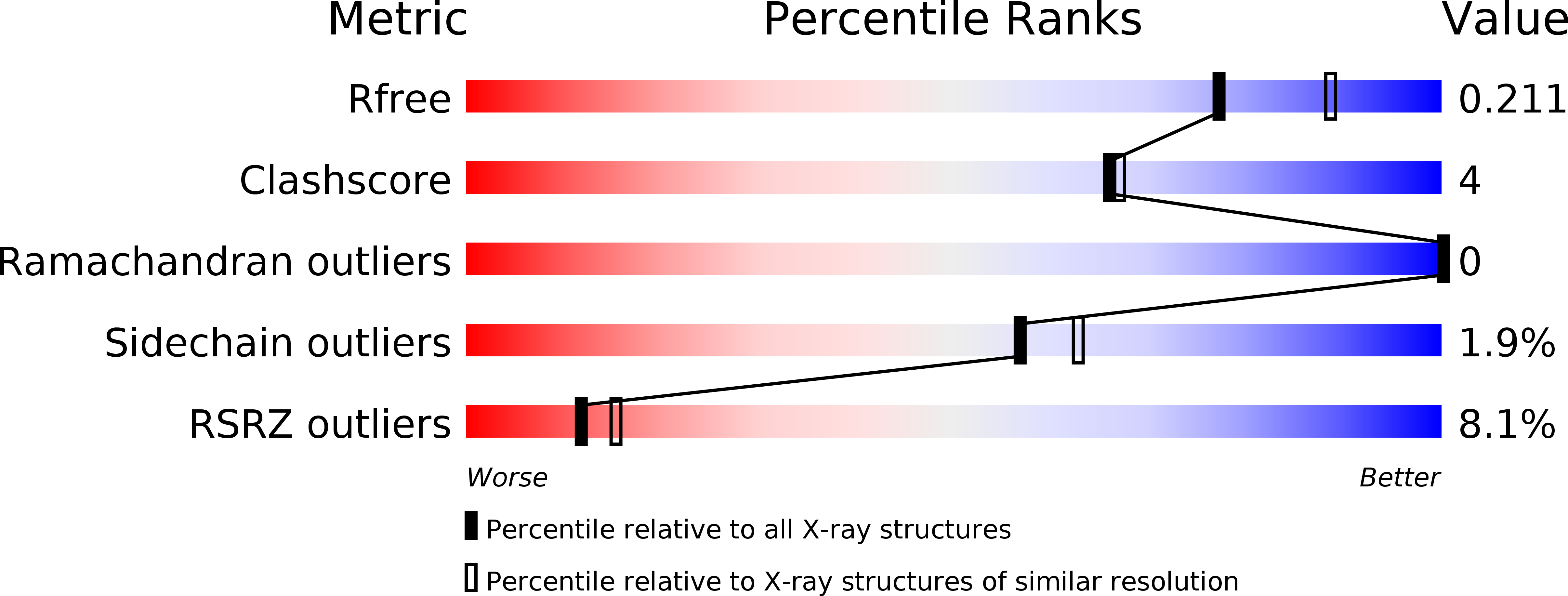
Deposition Date
2005-09-19
Release Date
2007-02-20
Last Version Date
2024-10-09
Entry Detail
PDB ID:
2C1Q
Keywords:
Title:
X-ray structure of biotin binding protein from chicken
Biological Source:
Source Organism:
GALLUS GALLUS (Taxon ID: 9031)
Host Organism:
Method Details:
Experimental Method:
Resolution:
2.10 Å
R-Value Free:
0.22
R-Value Work:
0.19
R-Value Observed:
0.19
Space Group:
I 41 2 2


